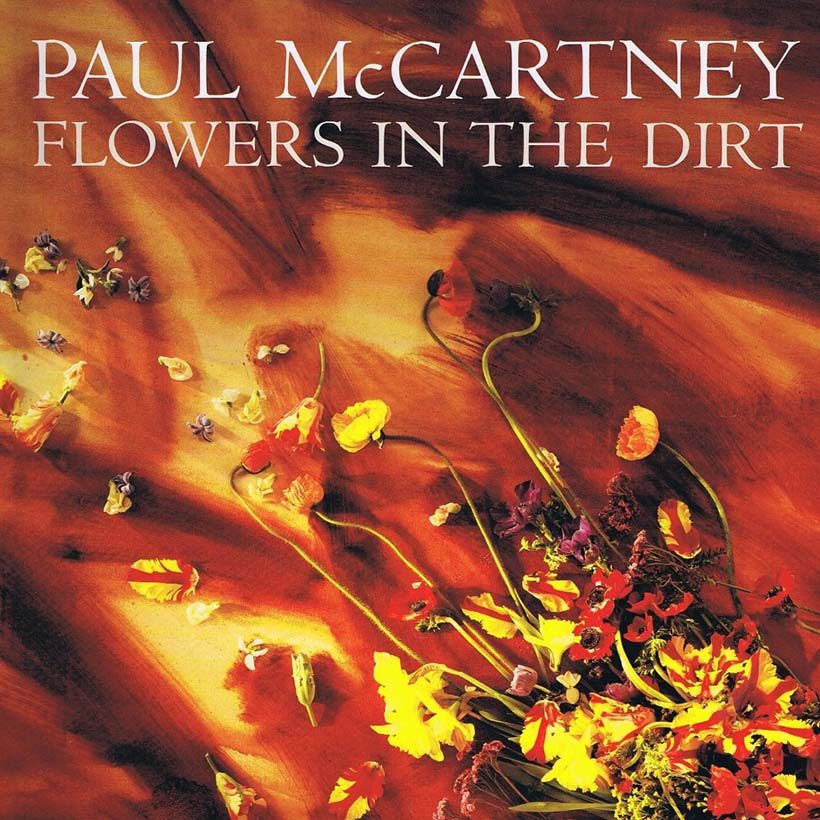‘Flowers In The Dirt’: How Paul McCartney Dug Up A Classic
Hailed upon its release, the album saw the ex-Beatle team up with Elvis Costello for one of his finest albums.

The three-year gap between the release of Flowers In The Dirt, in 1989, and its predecessor, 1986’s Press To Play, was, at that point in Paul McCartney’s career, his longest silence to date. There had been CHOBA B CCCP, in 1988, but that was a covers collection that only saw the light of day in the Soviet Union. By the close of the 80s, the world was ready for a new studio album proper from the legendary ex-Beatle.
Listen to Flowers In The Dirt now.
On paper, Press To Play had it all: overseen by in-demand producer Hugh Padgham (The Police, The Human League), it featured contributions from Pete Townshend, Phil Collins, and 10cc’s Eric Stewart, and was a crisp, contemporary pop record. Yet despite Rolling Stone’s declaration that it was “one of the sturdiest LPs of McCartney’s post-Beatles career,” and a UK No.8 placing, the album stalled at No.30 in the States.
Perhaps in response, McCartney took his time crafting and honing the songs for Flowers In The Dirt, released on June 5, 1989. The sessions eventually stretched from the autumn of 1987 through to February ’89, during which time McCartney teamed up with high-profile producers such as Trevor Horn (Frankie Goes To Hollywood) and Crowded House deskman Mitchell Froom, in addition to forging a songwriting alliance with Elvis Costello, who was also working on his own critically acclaimed UK Top 10 LP, Spike.
The highly productive McCartney-Costello axis eventually spawned several of Flowers In The Dirt’s most resonant tunes. Trailing the LP, the brash, Rubber Soul-esque “My Brave Face” cracked the Top 30 on both sides of the Atlantic, while the impassioned “You Want Her Too” offered Costello the opportunity for an acidic, John Lennon-esque cameo and “That Day Is Done” inspired a consummate, gospel-inflected vocal from McCartney.
Even without Costello’s input, however, McCartney was at his life-affirming best on numbers such as the infectious “Put It There,” the sturdy, radio-friendly “Figure Of Eight” and the effortlessly hooky “This One,” which duly followed “My Brave Face” into the UK Top 20. The apparently autobiographical “We Got Married,” meanwhile, was elevated by an expressive solo from Pink Floyd’s David Gilmour, while several bold stylistic departures were offered courtesy of the bright, funky “Rough Ride,” the lush, woodwind-assisted “Distractions” and the reggae-flavored, rainforest-related protest song “How Many People.”
Press and public alike concurred that Flowers In The Dirt was a fresh and invigorating return to form, with respected Los Angeles Times critic Robert Hilburn even pronouncing it “McCartney’s best solo album in more than a decade.” Commercially, the album made sizeable waves, going gold in the US and platinum in the UK, where it matched the success of 1980’s McCartney II by topping the British Top 40.
Backed by crack personnel from the album sessions, McCartney announced his first world tour since the 1975-1976 global Wings Around The Word trek. The acclaimed Paul McCartney World Tour opened in September ’89 and ran until July 1990, with the stellar, career-spanning setlist including numerous Beatles songs that McCartney hadn’t performed live since the Fab Four retired from the stage in August 1966, along with choice cuts from his latest triumph.












